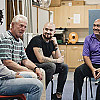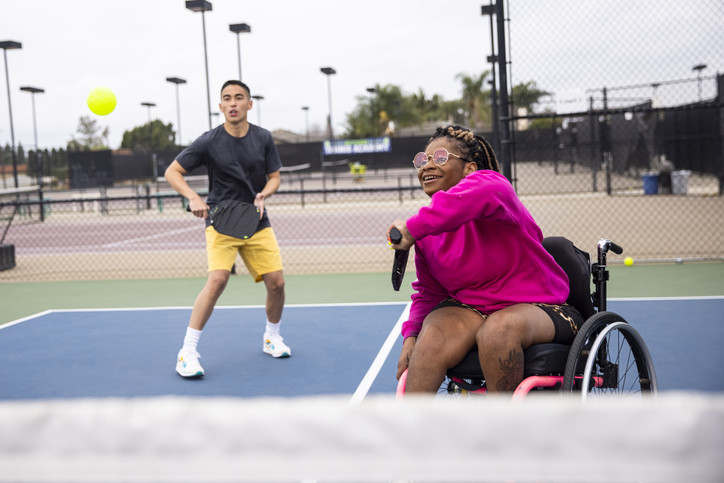
How does prostate cancer treatment affect mental health?

5 timeless habits for better health

What are the symptoms of prostate cancer?

Is your breakfast cereal healthy?

When pain signals an emergency: Symptoms you should never ignore

Does exercise give you energy?

Acupuncture for pain relief: How it works and what to expect

How to avoid jet lag: Tips for staying alert when you travel

Biofeedback therapy: How it works and how it can help relieve pain

Best vitamins and minerals for energy
Exercise & Fitness Archive
Articles
Reclaim your pre-pandemic function
Many people have become deconditioned and lost some physical function as a result of inactivity during the pandemic. This may be causing them to change their habits, patterns, and activities because they don't think they can do them or don't feel like doing them anymore. People who've lost physical function as a result of inactivity can take several steps to get function back. Examples include setting goals, tracking activity, getting help from a physical therapist, adding weight training to an exercise regimen, exercising with a friend, and not giving up.
The many ways exercise helps your heart
Aerobic and muscle-building exercises can trigger physiological changes that improve blood vessels and metabolism in ways that help prevent all the major risk factors that contribute to heart disease. These include high blood pressure, diabetes, obesity, and unhealthy cholesterol levels. Exercise can also improve mental health problems such as depression and stress, which are common but underrecognized risks for heart disease.
Rethinking cardio exercise
Standard guidelines recommend at least 150 minutes per week of moderate-intensity aerobic exercise. But many older adults have trouble reaching this mark, as they either don't enjoy aerobic workouts or have physical or medical issues that make traditional cardio exercise a challenge. Breaking down the weekly requirements into smaller daily segments and trying a variety of activities that can qualify as moderate intensity can help people meet their exercise needs.
The best exercises for your warm-up
Warm-ups prepare the body for the physical demands of a workout or sports. They should be tailored to the types of activities that are about to be performed. For a strengthening routine or moderate-intensity activity (such as brisk walking), marching in place for a few minutes makes an effective warm-up. For vigorous physical activity, such as swimming or playing tennis, or for activity involving strenuous physical movements, such as golf, a more extensive warm-up is necessary. For example, a golf warm-up should include marching in place and movements that gently swing the arms and trunk.
Meeting your exercise goals online
The COVID-19 pandemic shut down many gyms, spawning new online fitness class options that included Spin, Pilates, dance, and yoga. Maintaining an exercise routine during the pandemic offered multiple physical and mental health benefits by boosting mood-related brain chemicals and enhancing sleep. People exercising virtually could stay fit and maintain contact with others without risk of COVID infection. Even beyond pandemic-related concerns, virtual workouts can offer convenience, variety, privacy, and a sense of shared experience.
Get a lift from body-weight workouts
Body-weight exercises are ideal substitutes for regular workouts when people are short on time or looking to shake up their usual routine. These types of exercises are not only versatile—as they can be done anytime, anywhere, without any equipment— but they also help improve everyday movements by activating the smaller stabilizing muscles that sometimes get missed when a person uses gym machines or dumbbells.
Do activity trackers make us exercise more?
Activity trackers appear to motivate people to walk 40 more minutes per day, resulting in about two pounds of weight loss per person over time, according to an analysis published in the August 2022 issue of Lancet Digital Health.
Taking up adaptive sports
Our abilities may change during the course of a lifetime. Adaptive sports are competitive or recreational activities that are modified to support people living with disabilities or limitations.
Hybrid exercise training
Hybrid exercise training combines heart-pumping aerobic action with muscle-strengthening moves in the same exercise session. The strategy has the advantage of meeting two key goals of the federal Physical Activity Guidelines in one fell swoop. And it also appears to be one of the best—and most time-efficient—ways for people who are overweight to lower their risk of cardiovascular-related risk factors. Strong muscles boost a person's basal metabolic rate—the amount of energy the body needs to keep working during rest. That improves weight-loss efforts by ramping up the number of calories burned.

How does prostate cancer treatment affect mental health?

5 timeless habits for better health

What are the symptoms of prostate cancer?

Is your breakfast cereal healthy?

When pain signals an emergency: Symptoms you should never ignore

Does exercise give you energy?

Acupuncture for pain relief: How it works and what to expect

How to avoid jet lag: Tips for staying alert when you travel

Biofeedback therapy: How it works and how it can help relieve pain

Best vitamins and minerals for energy
Free Healthbeat Signup
Get the latest in health news delivered to your inbox!
Sign Up











